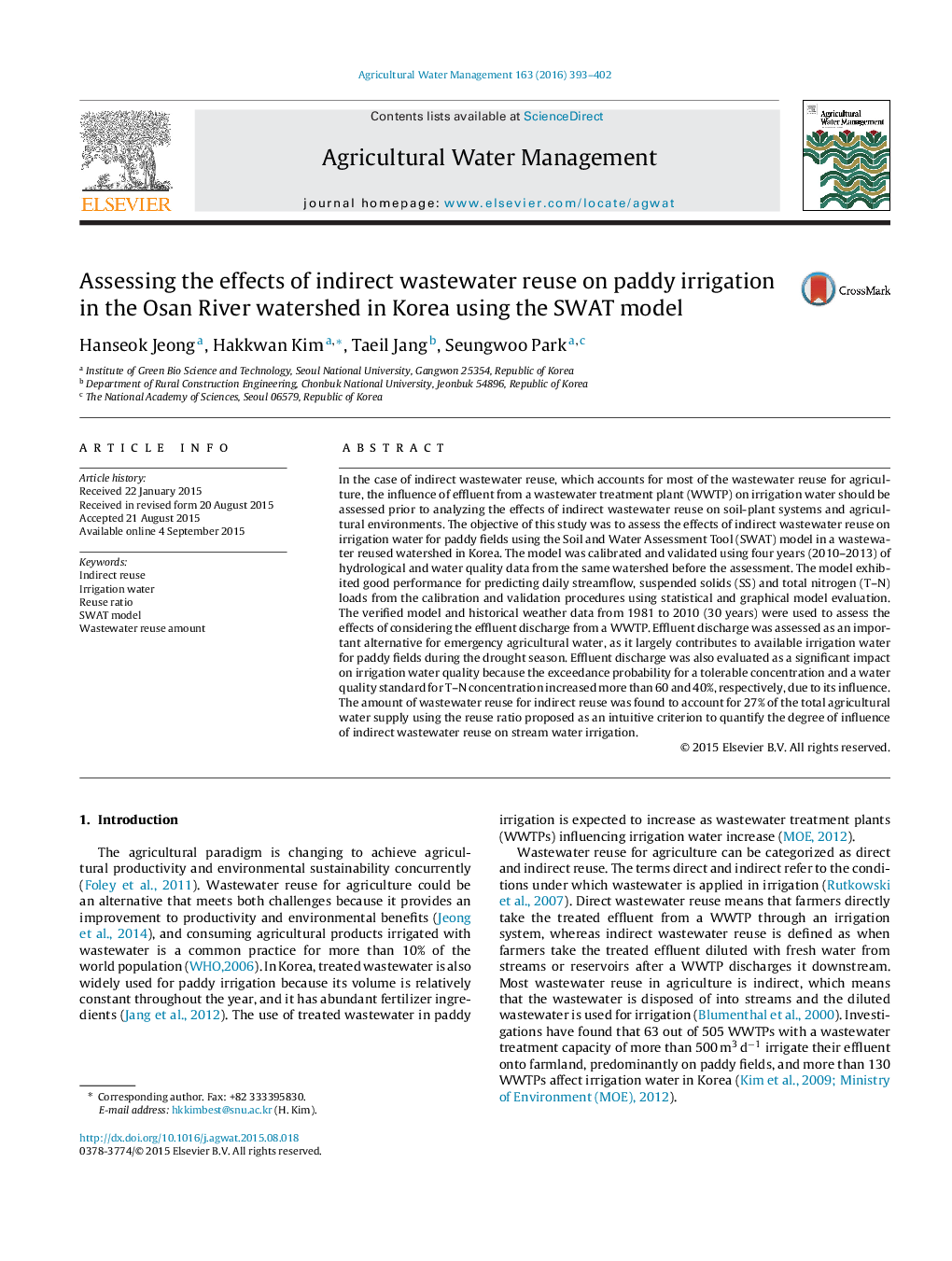| کد مقاله | کد نشریه | سال انتشار | مقاله انگلیسی | نسخه تمام متن |
|---|---|---|---|---|
| 4478367 | 1622916 | 2016 | 10 صفحه PDF | دانلود رایگان |

• Effluent discharge is an alternative to paddy irrigation during the drought season.
• Effluent discharge has a significant impact on T–N concentration of irrigation water.
• Reuse ratio is proposed to quantify the influence of indirect wastewater reuse.
• Effluent discharge accounts for 27% of indirect wastewater irrigation.
In the case of indirect wastewater reuse, which accounts for most of the wastewater reuse for agriculture, the influence of effluent from a wastewater treatment plant (WWTP) on irrigation water should be assessed prior to analyzing the effects of indirect wastewater reuse on soil-plant systems and agricultural environments. The objective of this study was to assess the effects of indirect wastewater reuse on irrigation water for paddy fields using the Soil and Water Assessment Tool (SWAT) model in a wastewater reused watershed in Korea. The model was calibrated and validated using four years (2010–2013) of hydrological and water quality data from the same watershed before the assessment. The model exhibited good performance for predicting daily streamflow, suspended solids (SS) and total nitrogen (T–N) loads from the calibration and validation procedures using statistical and graphical model evaluation. The verified model and historical weather data from 1981 to 2010 (30 years) were used to assess the effects of considering the effluent discharge from a WWTP. Effluent discharge was assessed as an important alternative for emergency agricultural water, as it largely contributes to available irrigation water for paddy fields during the drought season. Effluent discharge was also evaluated as a significant impact on irrigation water quality because the exceedance probability for a tolerable concentration and a water quality standard for T–N concentration increased more than 60 and 40%, respectively, due to its influence. The amount of wastewater reuse for indirect reuse was found to account for 27% of the total agricultural water supply using the reuse ratio proposed as an intuitive criterion to quantify the degree of influence of indirect wastewater reuse on stream water irrigation.
Journal: Agricultural Water Management - Volume 163, 1 January 2016, Pages 393–402